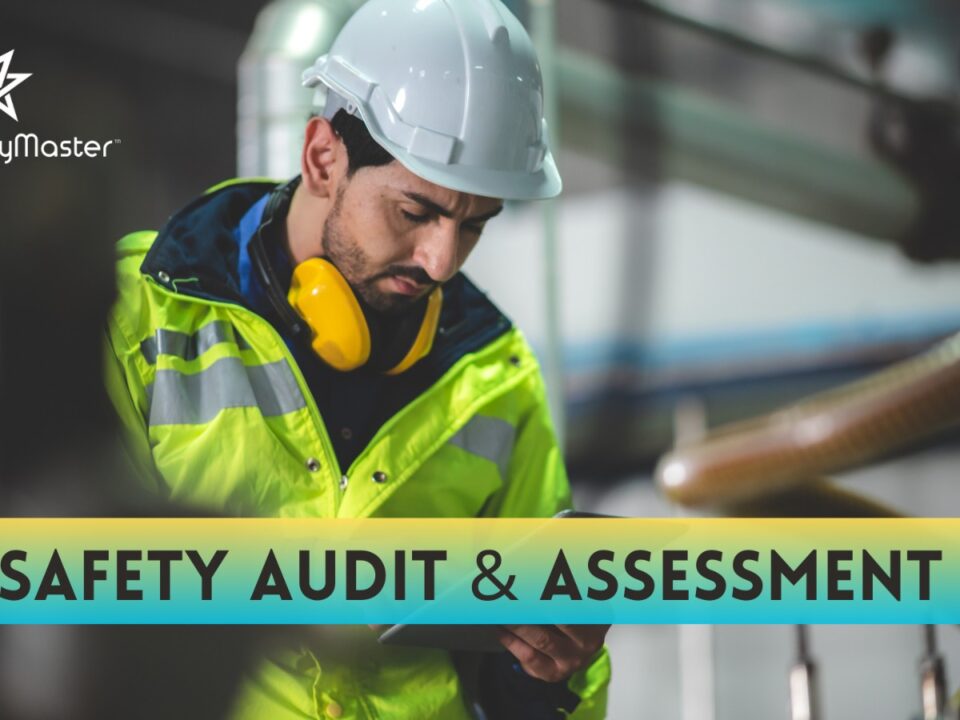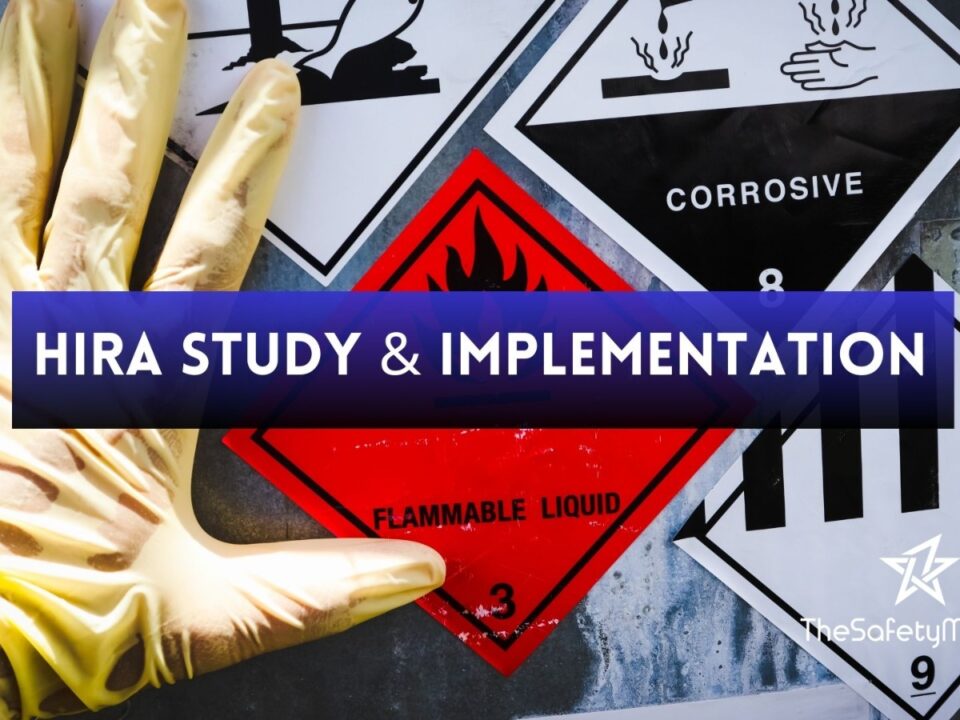Process Hazard Analysis Techniques
Legal Safety Audit – TheSafetyMaster™
September 21, 2023
Top Benefits of Hiring Professional Safety Consultants
September 23, 2023Process Hazard Analysis is a critical facet of ensuring safety and minimizing risks in various industries. It involves a systematic approach to identifying, assessing, and mitigating potential hazards associated with industrial processes. By analyzing these hazards, organizations can better protect their employees, the environment, and their assets.
In this article, we will delve into the world of Process Hazard Analysis Techniques. We will explore different methods that can be employed to effectively evaluate and manage process hazards. From the power of imagination in What-If Analysis to the comprehensive evaluation offered by Checklist Analysis, from delving into the details with HAZOP Analysis to tracing potential hazards’ origins with Fault Tree Analysis – we will cover it all.
Understanding the Importance of Process Hazard Analysis
Process Hazard Analysis (PHA) is a vital component of any organization’s risk management strategy. As the saying goes, knowledge is power, and in the realm of industrial safety, this adage holds true. By conducting a thorough analysis of potential hazards and risks associated with a process or operation, companies can proactively identify and mitigate potential dangers before they escalate into catastrophic incidents.
Process Hazard Analysis not only safeguards the well-being of employees but also protects valuable assets, preserves reputation, and ensures business continuity. By investing time and resources into effectively assessing process hazards, organizations demonstrate their commitment to safety, fostering a culture that prioritizes the well-being of its workforce. Moreover, with increased scrutiny from regulatory bodies and public awareness about industrial accidents, implementing robust process hazard analysis techniques becomes a strategic advantage in today’s competitive landscape.
The Story of a Successful Process Hazard Analysis Implementation
Imagine a bustling chemical plant, its operations running smoothly like a well-oiled machine. But beneath the surface, there lies an unwavering commitment to safety and an understanding that complacency can lead to disaster. This is the tale of how one such plant embarked on a journey towards process excellence through the successful implementation of process hazard analysis.
In this story, we follow the dedicated team of engineers and safety professionals who recognized the need for a proactive approach to identify and mitigate potential hazards. With meticulous planning and unwavering determination, they embraced the challenge head-on, harnessing their collective expertise and diving deep into every aspect of their complex processes.
Through tireless data collection and historical analysis, they painstakingly pieced together a comprehensive picture of their operations. Armed with this knowledge, they delved into various process hazard analysis techniques, carefully selecting those most suited to their needs.
The team’s brainstorming sessions during what-if analyses were nothing short of inspirational. They let their imagination run wild as they explored numerous scenarios that could potentially lead to hazardous situations. This exercise not only helped them uncover hidden risks but also fostered an environment that encouraged creativity and out-of-the-box thinking.
Next came the checklist analysis, where no stone was left unturned. The team methodically worked through each item on their extensive checklist, ensuring that every possible hazard was evaluated and accounted for in their risk management strategies.
For more complex processes requiring detailed examination, they turned to HAZOP analysis. With meticulous attention to detail, they dissected each step in their operations to identify deviations from normal functioning and assess
Getting Started: Preparing for Process Hazard Analysis
Embarking on a process hazard analysis journey requires careful planning and preparation. Just as an artist lays out their canvas and selects their colors, so too must an organization set the stage for this critical undertaking. The success of the analysis hinges on assembling the right team, gathering relevant information, and establishing a solid foundation for exploration.
Before diving headfirst into process hazard analysis, it is imperative to assemble a team of individuals with diverse expertise and a shared commitment to safety. Like the pieces of a puzzle coming together, each member brings unique perspectives that combine to form a comprehensive understanding of potential hazards. By fostering collaboration between engineers, operators, safety professionals, and other stakeholders, the team becomes more than just the sum of its parts.
Step 1: Assembling the Right Team for Process Hazard Analysis
In the intricate realm of process hazard analysis, a harmonious collaboration between diverse minds is essential to unlock its full potential. Like a symphony orchestra, each member of the team brings their unique expertise and perspective, converging to create a masterpiece of safety. The key lies in carefully selecting individuals who possess a deep understanding of the processes involved, as well as those who can contribute valuable insights from various disciplines.
Imagine a team where chemical engineers bring their technical prowess, operators shed light on practical aspects, instrument technicians unveil hidden complexities, and safety professionals impart their regulatory wisdom. The synergy generated by this diverse ensemble fosters creativity and innovation while ensuring comprehensive hazard analysis coverage. Such dynamic interactions not only enhance the accuracy of identifying potential hazards but also pave the way for ingenious solutions that mitigate risks and elevate safety standards.
Step 2: Identifying and Understanding the Processes to Analyze
Embarking on a journey toward process hazard analysis requires a meticulous understanding of the processes that need to be analyzed. This crucial step sets the foundation for comprehensively identifying potential hazards and mitigating risks effectively.
When identifying processes, it is essential to cast a wide net, leaving no stone unturned in your pursuit of safety. Take a holistic approach by considering all elements involved – from raw materials and equipment to personnel and environmental factors. The beauty of this step lies in its ability to unearth hidden vulnerabilities, revealing opportunities for improvement that were previously unseen.
Picture this: as you delve deep into understanding each process, you uncover an innovative way to streamline operations while simultaneously reducing risk. By meticulously examining how individual components fit together like puzzle pieces, you gain valuable insights that can revolutionize not only safety but also efficiency and productivity. Remember, every process analyzed is an opportunity for growth and advancement.
Step 3: Gathering Data and Historical Information
Gathering data and historical information is a crucial step in the process hazard analysis journey. It provides the foundation upon which accurate evaluations can be made, enabling organizations to identify potential hazards effectively. The collection of relevant data allows for a comprehensive understanding of past incidents, near-misses, and operational trends that may present risks.
When embarking on this step, organizations should aim to gather as much information as possible from various sources, including incident reports, maintenance records, standard operating procedures, and even employee interviews. Additionally, technological advancements such as data logging systems can provide valuable real-time data on process parameters and performance indicators.
This diligent approach to gathering information not only helps identify potential hazards but also empowers organizations with a profound understanding of their processes. By delving into historical data and analyzing previous incidents or near-misses, companies can implement effective preventive measures to mitigate risks effectively.
Step 4: Choosing the Most Appropriate Process Hazard Analysis Technique
Now that you have assembled the right team, identified the processes to analyze, and gathered all the necessary information, it is time to embark on the vital task of choosing the most suitable process hazard analysis technique. Just as an artist carefully selects their brush and palette for a masterpiece, so too must you select the tool that will unlock hidden hazards and ensure a safe working environment.
Each process hazard analysis technique possesses its own strengths and focuses on specific aspects of risk assessment. The decision-making process may feel daunting, but fear not; for within this challenge lies an opportunity to explore new avenues of safety. Consider what-if analysis, a technique that taps into your team’s collective imagination by asking “what if” questions to envision potential scenarios. Or perhaps checklist analysis is more your style; with its systematic approach, it leaves no stone unturned in evaluating all possible hazards.
Alternatively, you might find yourself drawn to HAZOP analysis. This technique delves into intricate details with methodical precision, unraveling hidden dangers like an investigator solving a mystery. If tracing the origins of potential hazards appeals to you, then consider fault tree analysis as your chosen method. And let us not forget failure mode and effects analysis; with its focus on identifying consequences, it equips your team with valuable insights for preventing accidents.
The beauty of this step lies in selecting a process hazard analysis technique that aligns harmoniously with your unique circumstances. Embrace this opportunity to discover which tool resonates most deeply with your team’s skills and objectives. Remember that each chosen technique brings forth new possibilities for enhancing safety measures and fostering a
Technique 1: What-If Analysis – Unleashing The Power of Imagination
Within the realm of Process Hazard Analysis techniques, What-If Analysis stands as a remarkable approach that harnesses the boundless potential of human imagination. By posing questions such as “What if this process step fails?” or “What if a hazardous material is accidentally introduced?”, this technique delves deep into the realm of possibilities, encouraging stakeholders to explore every conceivable scenario.
What-If Analysis sparks a creative fire within individuals, inspiring them to envision hypothetical situations that may seem improbable at first glance but could have significant consequences if they were to occur. This technique’s true strength lies in its ability to break free from conventional thinking, unlocking innovative ideas and solutions. It encourages participants to embark on an intellectual journey where no idea is too outlandish or absurd.
Technique 2: Checklist Analysis – A Systematic Approach for Comprehensive Evaluation
Checklist Analysis, a widely used and reliable technique in Process Hazard Analysis (PHA), provides a structured framework for evaluating potential hazards by systematically examining various aspects of a process. This method involves going through a comprehensive checklist, meticulously assessing each item on the list to ensure that no crucial detail slips through the cracks.
With its methodical nature, Checklist Analysis ensures that all critical elements are considered during the evaluation process. The checklist comprises a range of factors including equipment integrity, process parameters, safety systems, human factors, and environmental impacts. By carefully scrutinizing each item on the list, organizations can identify potential hazards and mitigate them effectively before they can escalate into major incidents.
As an added benefit, Checklist Analysis fosters collaboration among team members involved in the PHA process. By working together to tick off items on the checklist, team members gain valuable insights from their colleagues’ expertise and experiences. This collaborative approach promotes interdisciplinary knowledge-sharing and strengthens overall organizational safety culture.
Technique 3: HAZOP Analysis – Delving into the Details for Uncovering Hidden Hazards
HAZOP, short for Hazard and Operability Study, is a meticulously crafted process hazard analysis technique that goes beyond surface-level examination. It embraces the philosophy of getting elbow-deep into the intricacies of a system to unveil potential hazards lurking in its shadowy corners. By systematically exploring deviations from normal operating conditions, HAZOP brings meticulous attention to detail, leaving no stone unturned in pursuit of comprehensive safety.
Imagine embarking on a journey where you play the role of an intrepid explorer, wielding a magnifying glass to uncover hidden dangers. That’s precisely what HAZOP analysis does – it ventures fearlessly into uncharted territory within your processes, dissecting each component with curiosity and scrutiny. This technique invites participants to brainstorm potential deviations in variables such as temperature, pressure, flow rate, or composition. The beauty lies in the collective imagination it ignites as participants ask probing questions like “What if pressure spikes beyond acceptable limits?” or “What if temperature drops unexpectedly?” Through this intellectual voyage, HAZOP not only uncovers hidden hazards but also stimulates creative problem-solving that can lead to innovative safety measures.
Technique 4: Fault Tree Analysis – Tracing the Origins of Potential Hazards
Fault Tree Analysis (FTA) is a powerful analytical tool employed in process hazard analysis to investigate and trace the origins of potential hazards. By breaking down complex systems into logical and interconnected events, FTA helps identify specific combinations of failures or events that could result in an undesired outcome. This technique enables organizations to gain a comprehensive understanding of the root causes behind hazardous scenarios, empowering them to develop effective preventive measures.
Imagine a large chemical plant with intricate processes and numerous interdependencies. Fault Tree Analysis allows us to dive deep into this labyrinth and uncover critical failure pathways by constructing logical diagrams that capture the various components, events, and conditions leading to an accident or malfunction. It provides an organized framework for exploring how multiple failures can align, highlighting vulnerable areas within the system that require immediate attention.
Technique 5: Failure Mode and Effects Analysis – Identifying the Consequences
Failure Mode and Effects Analysis (FMEA) is a powerful technique that allows us to delve into the intricate details of a process, uncovering potential failures and their subsequent effects. By scrutinizing every step, component, and interaction within a system, FMEA enables us to identify the consequences of failures in order to develop robust safety measures.
Picture this: A team of meticulous engineers huddled together, meticulously dissecting a process with unwavering determination. As they analyze each potential failure mode, mapping out its causes, effects, and severity levels, they simultaneously devise ingenious mitigation strategies. The atmosphere crackles with anticipation as they envision a future where accidents are prevented through comprehensive understanding. With FMEA as their compass guiding them towards safer skies, they embark on a journey of prevention that promises greater resilience for the industries we rely on.
Step 5: Conducting the Chosen Process Hazard Analysis Technique
Now that you have carefully chosen the most appropriate process hazard analysis technique, it is time to dive into the heart of the analysis. This step is where the magic happens, as you uncover potential hazards and gain invaluable insights into your processes.
What-If Analysis: With boundless imagination as your guide, embark on a journey of exploration. Pose questions starting with “What if?” and let your mind wander to every possible scenario. Consider different variables, conditions, and events that could occur within each step of the process. Engage your team members in thought-provoking discussions, encouraging them to contribute their ideas and perspectives. By fostering an environment of creative thinking, you will uncover hidden risks and generate innovative solutions.
Checklist Analysis: Armed with a comprehensive checklist tailored to your specific industry or process, systematically evaluate each element against predetermined criteria. Leave no stone unturned as you meticulously review all aspects of your process for potential hazards. By following this methodical approach, you ensure thoroughness in identifying risks and provide a solid foundation for developing effective mitigation strategies.
Step 6: Analyzing the Results and Identifying Safety Measures
Once the process hazard analysis is complete, it is time to delve into the results and uncover valuable insights that will pave the way for enhanced safety measures. Analyzing the findings requires a meticulous approach, carefully examining each potential hazard identified during the analysis process.
This step involves evaluating the severity and probability of each potential hazard, and assessing its impact on operations, personnel, and the surrounding environment. By conducting a thorough analysis, you can prioritize risks based on their significance and determine appropriate safety measures to mitigate or eliminate them. Each potential hazard becomes an opportunity for improvement – a chance to fortify your processes and protect your workforce.
Step 7: Documenting and Communicating the Findings
Documenting and effectively communicating the findings of a process hazard analysis is a crucial step in ensuring that the identified hazards are addressed and mitigated. This step serves as a bridge between analysis and action, enabling organizations to implement necessary safety measures. The documentation should be comprehensive and easily understandable, providing a clear roadmap for risk reduction.
When documenting the findings, it is essential to include detailed information about each identified hazard, its potential consequences, and the recommended safety measures. These findings should be organized in a systematic manner, using tables or matrices to present the data in a concise yet comprehensive format. The document should also emphasize the urgency of addressing these hazards and highlight the potential benefits of implementing the recommended measures.
The Power of Learning from Analysis – Real-Life Success Stories
Real-life success stories serve as powerful reminders of the immense value that can be derived from process hazard analysis. These stories, filled with triumphs and accomplishments, exemplify how a comprehensive analysis can lead to improved safety, enhanced efficiency, and a culture of continuous improvement within an organization.
Take, for instance, the story of a chemical manufacturing plant that implemented a thorough HAZOP analysis on its production process. Through meticulous examination and brainstorming sessions, the team uncovered potential hazards associated with an outdated piece of equipment. Armed with this newfound knowledge, they promptly replaced the equipment with a state-of-the-art version that not only increased productivity but also significantly reduced the risk of accidents. Not only did this proactive approach save the company millions in potential damages and legal costs, but it also instilled confidence in the workforce who witnessed management’s commitment to their well-being.
Conclusion
In conclusion, process hazard analysis techniques serve as a vital tool in ensuring the safety and well-being of workers, communities, and the environment. By thoroughly examining potential hazards and implementing appropriate safety measures, organizations can prevent accidents and catastrophic incidents. While this task may seem daunting, the success stories shared by industry leaders illustrate the immense value of investing time and effort into process hazard analysis. By embracing these techniques with determination and diligence, we can create a safer future for all involved in hazardous processes. Remember, safety is not an option; it is a responsibility we owe to ourselves and those around us.



